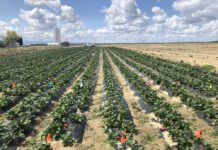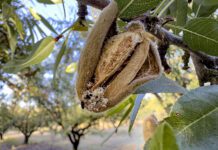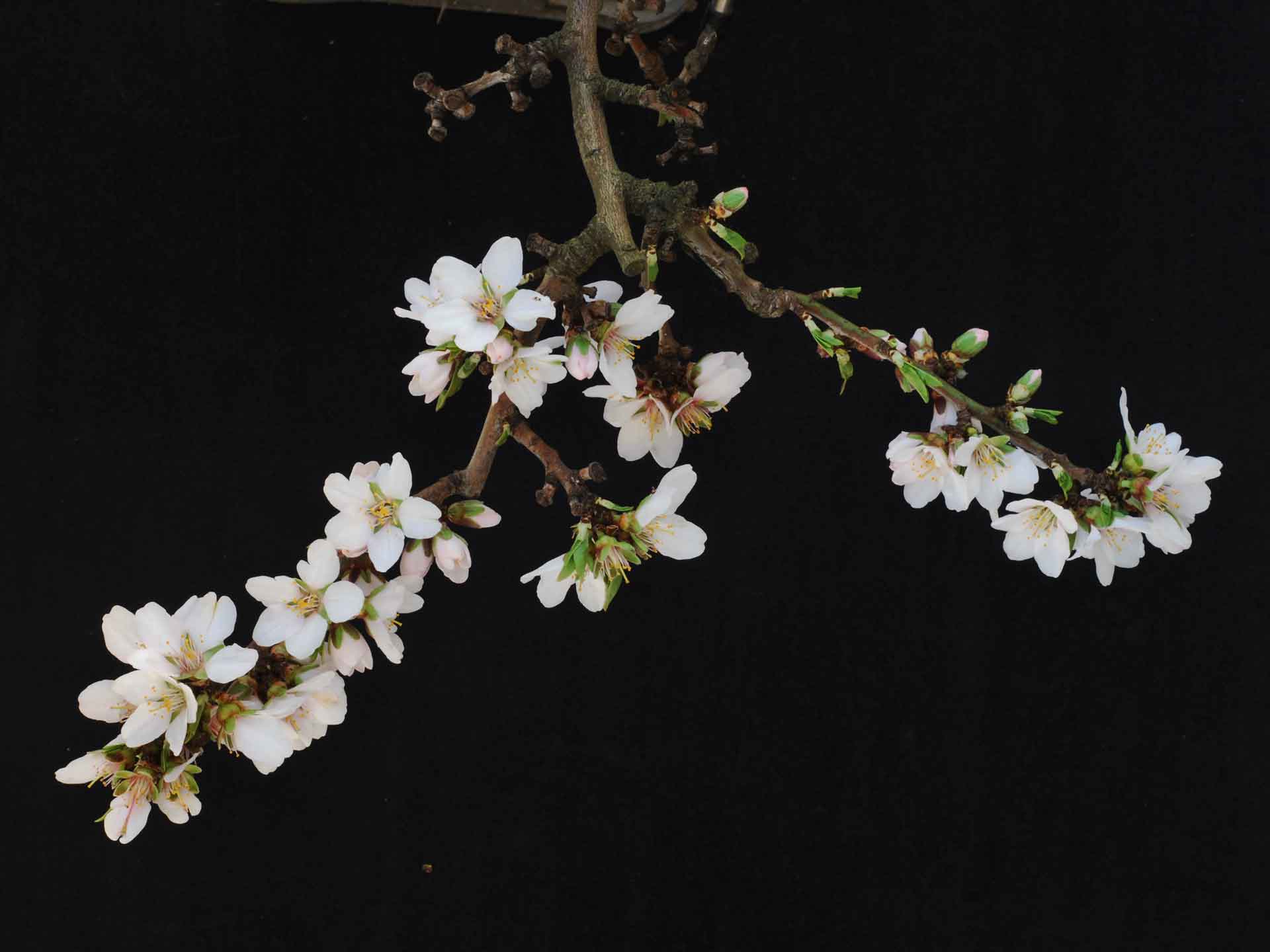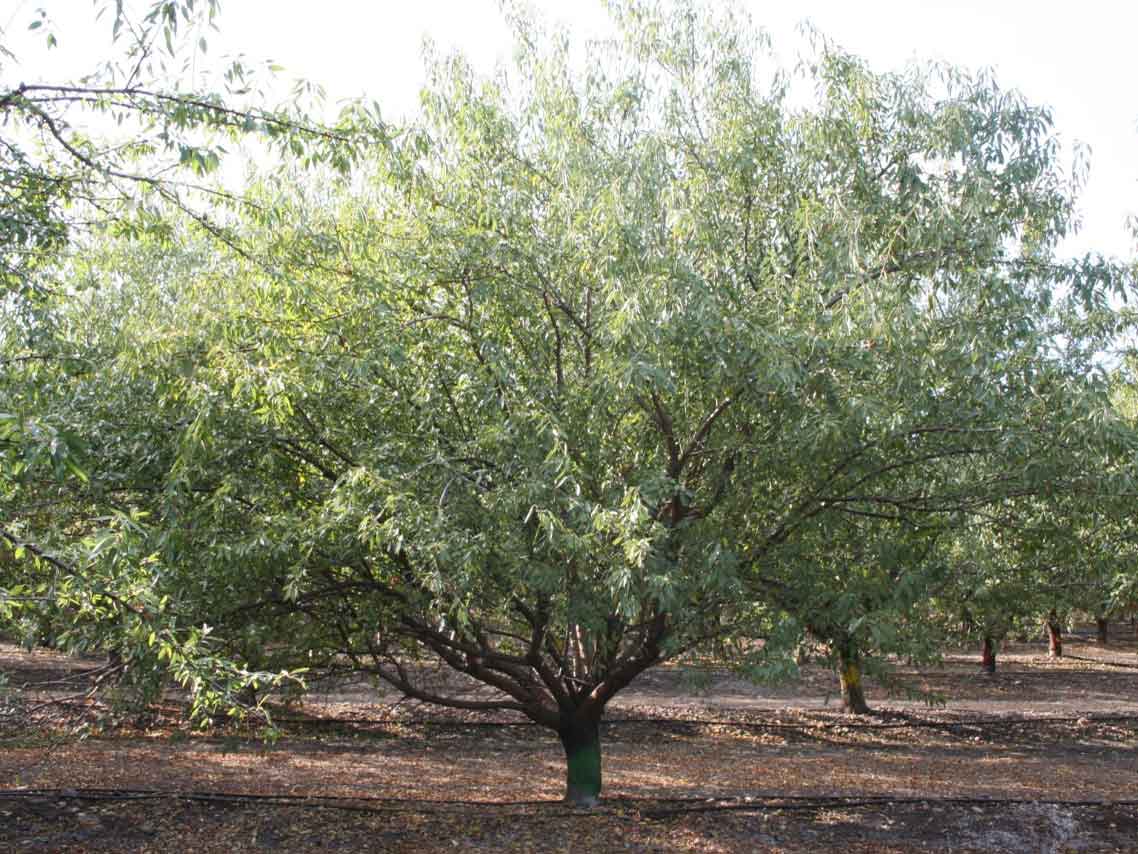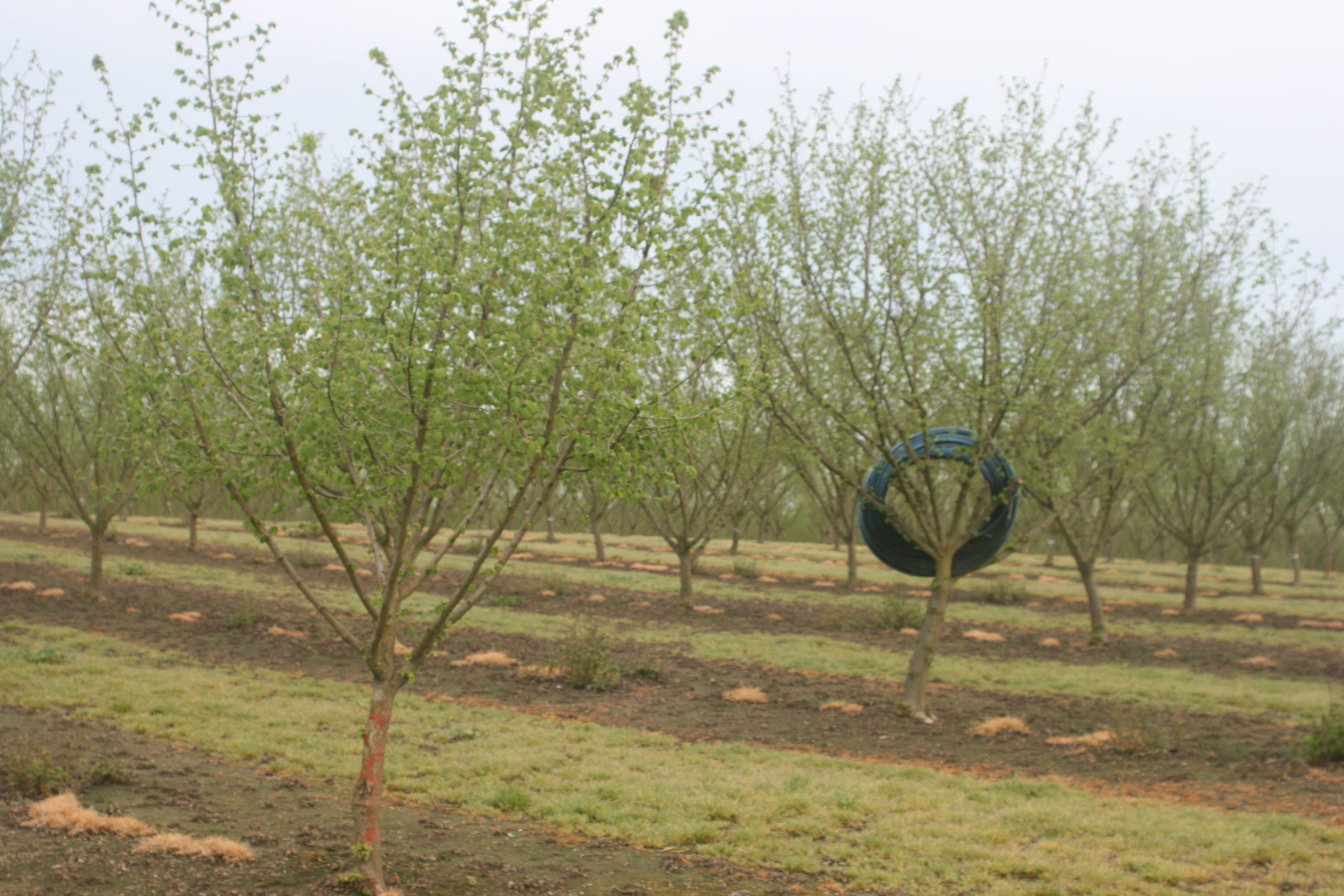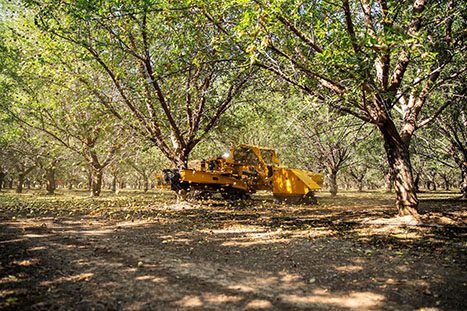
Designing, analyzing and refining a pest management plan for nut crops includes data collection as well as good decisions.
In a conversation-style presentation at The Almond Conference, panelists who do the dirty work in the orchard blocks described how they form their pest management plans that include flexibility and keeping an eye on a budget.
PCA Justin Nay of Integral Ag said navel orangeworm (NOW) is at the center of management plans and prevents crop damage. Nay, along with Cameron Boomgaarden of Vann Family Orchards, presented a look at their year-long strategies for pest management.
NOW damage statewide was 3.5% for 2024, lower than the previous year. Due to hotter-than-normal late summer temperatures, fourth-generation NOW occurred from late September through October in the southern part of the state, adding more to the overwintering population.
They begin at the end of the year just before harvest, collecting nut samples from orchard blocks to evaluate damage levels and determine how effective the plan was in preventing crop damage.
Much later, at orchard sanitation time, more mummies are inspected for NOW infestation rates. Nay said they may take 120 mummy nuts into the lab for inspection. Worms per mummy nut counted determine if a more aggressive sanitation will be done in a block. High counts may warrant a second mummy shake. Nay said a population estimate and risk potential will be developed with the collected data.
Going into bloom, the plan can call for trapping, mating disruption, number of sprays and early harvest timing. As the growing season progresses, traps are monitored for NOW activity. Using trap counts and other data, in June Nay said population estimates will be confirmed or rejected, and it will be determined if their pest control budget is appropriate.
“Some blocks will move down, some will move up in the threat level,” Nay said.
Moving on to May and June, Nay said, is the time to do what was planned in January, but if there is obvious need to change, they will back off. In July, hull split sprays are done based on first flight trap counts compared to overwinter data. This time of the year, Nay said, the plans will be variable (different levels of NOW damage potential). The plan can be adjusted at this time to address new information or observations. One or two hull split sprays can be done depending on harvest timing. Nay said they will also check to determine if block numbers remain valid and if they need to back off or be more aggressive.
Decisions are also made about materials to use and tank mixes, lower cost options and the costs of material and traps.
Nay said they will continue to set out NOW traps until the last block of Nonpareils are shaken. Mummy nut sample inspections at harvest entail forensic entomology. Age of NOW larvae found will be determined to see if spray timing was correct. Nay said the mummies will also be inspected for other sources of damage, including plant bugs and ants.
“There are lots of decisions to make on dealing with the information. We use this huge data set to improve,” Nay said.
A Year-Long Endeavor
A pest management plan is crucial for the coming year for several key reasons, Boomgaarden said, given the importance of timing and the swift nature in which pest problems can occur and multiply.
A proactive pest management plan helps mitigate risks by identifying and managing pest populations before they reach damaging levels. Effective pest management can minimize the reliance on chemical pesticides, promoting more sustainable farming practices and a true integrated pest management (IPM) approach. Additionally, a well-structured pest management plan helps growers budget more effectively by minimizing the need for reactive pest control measures.
Boomgaarden said pest management is always a year-long plan. This time of the year, he said, the plan is in a measurement phase, looking at historical data, making estimates of orchard NOW populations and establishing a baseline for the coming year.
Vann Brothers farms almonds, pistachios and walnuts in the Williams area. Boomgaarden said controlling NOW and preventing crop damage from insect pests is always top of mind.
Will their pest management plan change during the year? “Yes,” Boomgaarden said.
Large amounts of data are collected and analyzed and can result in the need to adjust a plan or go with a different type of management.
Budget and Incentives
Budget preparation also plays a part in planning for pest management.
Joe Coelho with Terra Linda Farms said a carefully planned budget will optimize resource allocation. As part of a presentation at The Almond Conference, Coelho said a budget ensures financial resources are allocated efficiently, minimizing waste and maximizing potential profits. A well-thought-out budget also prioritizes investments in cost-effective pest control methods to maximize impact.
Budget preparation also enhances decision-making, providing a financial overview that aids in making informed decisions and allows for flexibility in response to unexpected pest issues.
Finally, a budget is a tool for sustaining long-term financial health as it can prevent financial devastation from pest infestations, avoiding high cost remediation.
Coelho, who is a PCA and CCA, identified weeds, spider mites, insects, diseases, rodents and ants as causing the major expenses in prevention and control in orchards.
Recognizing the high level of variability across orchards, his budget snapshot was a $3900-per-acre static. That included $600 cash overhead for office expenses, insurance, taxes and repairs. Customs services, pollination, labs, pump testing harvest hulling and advisor fees were $1200 per acre. Machinery, labor, irrigation and soil amendments completed the budget snapshot.
Adjustable pest management costs included applications, herbicide, miticide, insecticide, fungicide, ant bait, mating disruption, rodenticides and adjuvants.
Coelho presented several revenue simulation buildouts to demonstrate low- and high-end decisions for insecticide applications.
There are incentives for growers who reduce the percentage of rejects by processors.
Mel Machado, vice president of member relations for Blue Diamond, said the goal of his company is to have reject levels below 2% for all types of insect or disease damage. The incentive, he said, when combined with incentives for foreign material and mechanical damage, can provide an additional 14 cents per pound above base for Nonpareil meats if the grower’s reject is less than 2%. Machado said different handlers have different break points for reject levels, but he also noted growers will lose money because they are not paid for their reject weights.

Cecilia Parsons | Associate Editor
Cecilia Parsons has lived in the Central Valley community of Ducor since 1976, covering agriculture for numerous agricultural publications over the years. She has found and nurtured many wonderful and helpful contacts in the ag community, including the UCCE advisors, allowing for news coverage that focuses on the basics of food production.
She is always on the search for new ag topics that can help growers and processors in the San Joaquin Valley improve their bottom line.
In her free time, Cecilia rides her horse, Holly in ranch versatility shows and raises registered Shetland sheep which she exhibits at county and state fairs during the summer.







